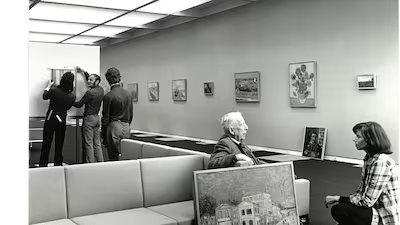
The artist's nephew and namesake, Vincent Willem van Gogh, at the Van Gogh Museum in 1973. Photo: Jan Versnel / MAI
The artist's nephew and namesake, Vincent Willem van Gogh, at the Van Gogh Museum in 1973. Photo: Jan Versnel / MAI
Van Gogh Museum at 50: Why the artist's work continues to resonate today
Institution director reveals all about past, present and future of building Dutch painter's legacy
Keith J Fernandez
June 13, 2023


